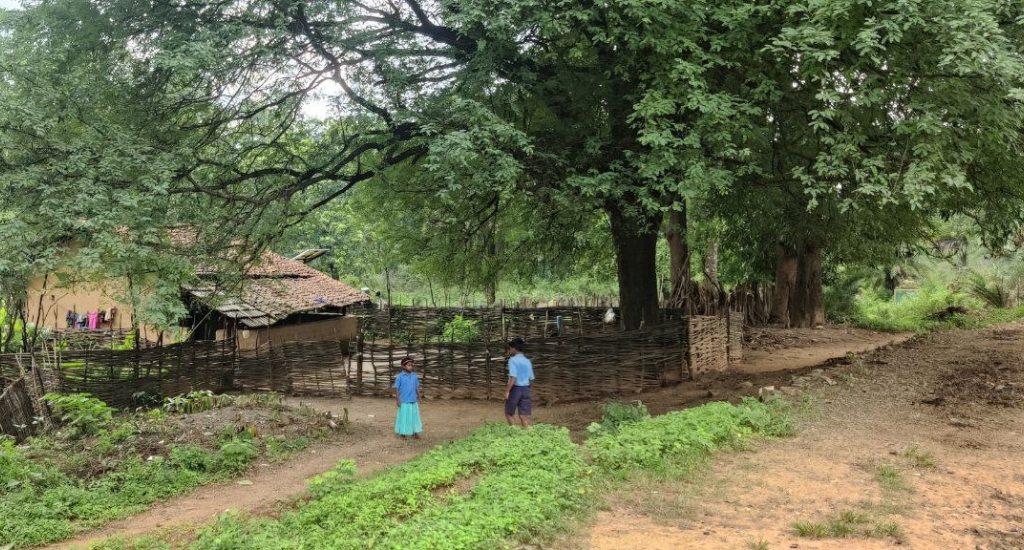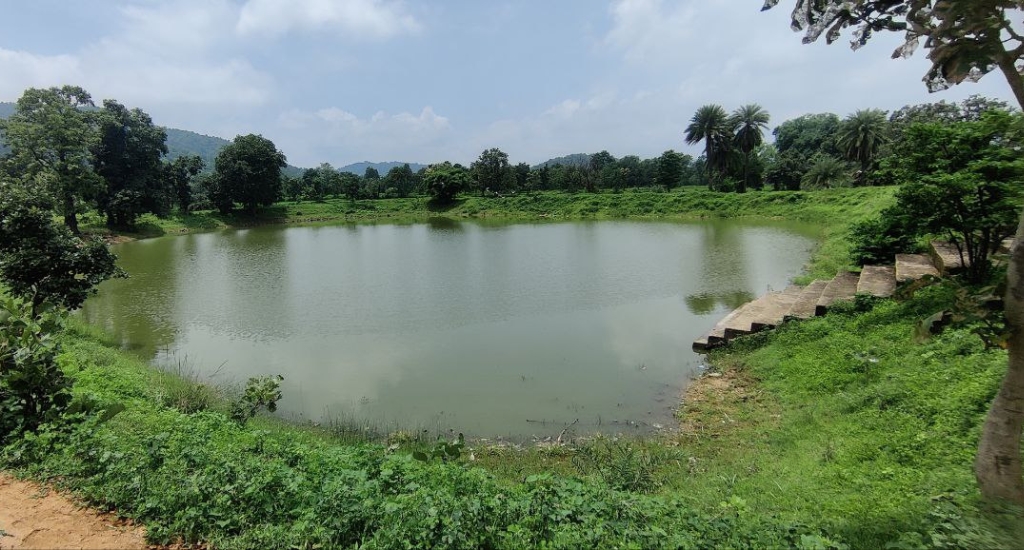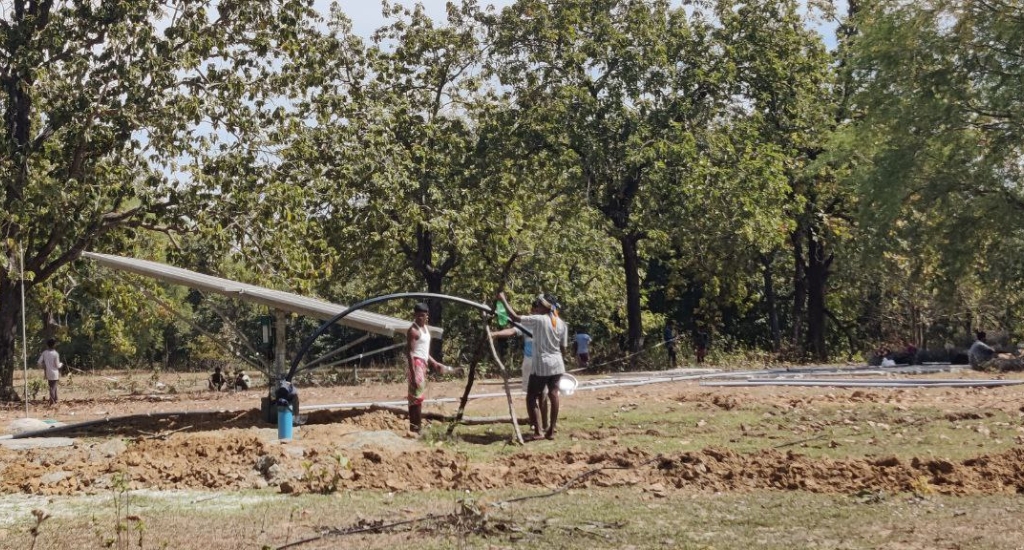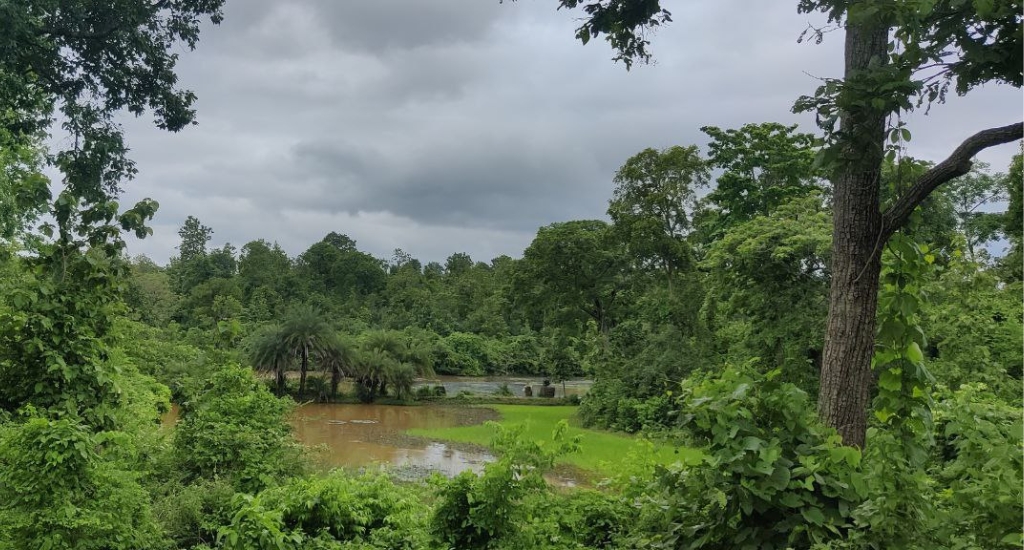Sukma, a tribal district in the Bastar region of Chhattisgarh, has long been associated with the grim legacy of Naxal extremism.
The district’s history is marked by conflict, with villages like Gorgunda, Karigundam, Burkapal (Tadmetla), and Mukramnala bearing the visible scars of destroyed schools, government buildings, and roads. The infamous 2010 Tadmetla attack, which claimed the lives of 76 CRPF personnel, remains a stark reminder of Sukma’s troubled past.

Despite these challenges, Sukma is now scripting a new story of resilience and transformation. Under the visionary leadership of District Collector Haris S, the district administration has launched several groundbreaking initiatives aimed at fostering development and restoring hope.
Among these, the Community Model Mango Plantation Initiative stands out as a beacon of progress. Conceptualised by PPIA fellows, this initiative seeks to rebuild livelihoods, strengthen community ties, and promote sustainable development in one of India’s most underserved regions.
Also read: Meet the emperor of the king of fruits in Malihabad
The concept and implementation
The Community Model Mango Plantation Initiative is strategically centred along the Dornapal-Jagargunda axis, covering five critical sites: Gorgunda, Mukramnala, Karigundam 1 and 2, and Burkapal (Tadmetla). These villages, historically dependent on rainfed rice farming and forest-based livelihoods like tamarind, mahua, and tendu leaf collection, faced stagnation due to the lack of irrigation facilities and agricultural innovation.
Recognising these limitations, the district administration and TRIF designed a model rooted in collective action and modern farming techniques. Farmers were encouraged to pool their land to create 10-acre mango plantations, supported by essential infrastructure like borewells, drip irrigation systems, and fencing to protect crops from cattle.
To ensure year-round productivity, mixed cropping systems were introduced, with farmers cultivating vegetables such as “khatta bhaji” and ladyfinger alongside long-term crops like mango, coconut, and lemon.
The district collector played a pivotal role in ensuring the seamless implementation of this project. From coordinating the timely provision of infrastructure to facilitating hands-on training for farmers, the administration’s proactive approach helped overcome initial resistance and skepticism within the community.

This collaborative effort laid a strong foundation for the initiative’s success, transforming it from a concept into a reality that could be replicated across the region.
Moti Madkam’s story: Resilience in action
Moti Madkam, a 25-year-old farmer from Gorgunda village, is a shining example of Sukma’s transformation. Born into an era of conflict, Moti’s childhood was disrupted by the Salwa Judum campaign, which forced him and his family to flee their ancestral home.
Upon returning, he faced the daunting task of rebuilding his life in a region marked by instability and limited opportunities.
When the mango plantation project was introduced, Moti was among the first to recognise its potential. Encouraged by the district administration and with multiple rounds of stakeholder consultations with PPIA fellows, he decided to participate in the initiative.
By diversifying his farming practices to include mango, khatta bhaji, and ladyfinger, Moti not only improved his income but also embraced sustainable agricultural practices. His first harvest earned him Rs 80,000–a life-changing sum for a farmer accustomed to subsistence-level earnings.
Inspired by his initial success, Moti now plans to expand into millet cultivation during the kharif season. Millet, known for its resilience to harsh climatic conditions, aligns with his vision of sustainable and diversified farming.
Achievements and impact
The Community Model Mango Plantation Initiative has achieved remarkable milestones since its inception, planting approximately 3,000 mango saplings across 60 acres. These efforts are not only transforming the economic landscape of Sukma but also fostering social and environmental stability.
Also read: Hakkum Mail wheels in hope for Chhattisgarh’s tribes

Key achievements include:
Economic empowerment: Farmers transitioning to high-value crops like mangoes have experienced substantial income growth. The long-term nature of mango cultivation ensures stable and predictable earnings, which are vital for breaking the cycle of poverty.
Sustainability: The introduction of drip irrigation and mixed cropping systems has revolutionised resource management in the region. By integrating millets alongside vegetables and tree crops, the project promotes soil health, conserves water, and reduces the risk of crop failure.
Social stability: Reliable incomes have helped bridge economic disparities and reduce the allure of extremist ideologies. The initiative’s collective approach to land use has also fostered stronger community bonds, creating a sense of shared purpose and mutual support.
Environmental restoration: By increasing green cover through mango plantations, the project contributes to ecological balance and climate change mitigation. The adoption of diverse cropping patterns further supports local biodiversity, enriching the region’s natural resources for future generations.
Inspiring broader change
Encouraged by the overwhelming success of the mango plantations, the district administration has submitted a proposal to NITI Aayog to expand the initiative.
The plan envisions the addition of 120 acres across around 12 new sites, positioning Konta as a major mango production hub. To ensure maximum profitability for farmers, the expansion will include dedicated marketing and distribution channels, connecting Sukma’s produce to broader markets.
Beyond mango cultivation, the initiative is driving agricultural diversification. Farmers are being introduced to advanced practices like the System of Rice Intensification (SRI) for paddy cultivation and millet farming as a climate-resilient alternative.

These efforts aim to enhance food security, improve nutritional outcomes, and foster a culture of innovation and self-reliance among tribal communities.
Additionally, the district administration has recognised the potential of integrating millets into the region’s agricultural framework.
Known as “superfoods” for their nutritional and environmental benefits, millets are being promoted as a sustainable option for both personal consumption and commercial production. This focus aligns with India’s broader push for millet promotion, which has gained global attention.
As Sukma continues its journey toward progress, the mango plantations serve as living proof that hope and resilience can thrive even in the face of adversity.
Also read: Rider cycles his way to reviving sustainable farming in Bihar
The lead photo shows Sukma, once marred by conflict and now transformed into a green belt with the addition of mango plantations. (Photo by Saurav Kumar)
Saurav Kumar is a Public Policy in Action Fellow with Transform Rural India and works with the district administration of Sukma in Chhattisgarh.
Atray Karmahe is an Assistant Town Planner at Hazaribag Municipal Corporation and a former PPIA Fellow in Sukma with Transform Rural India.








